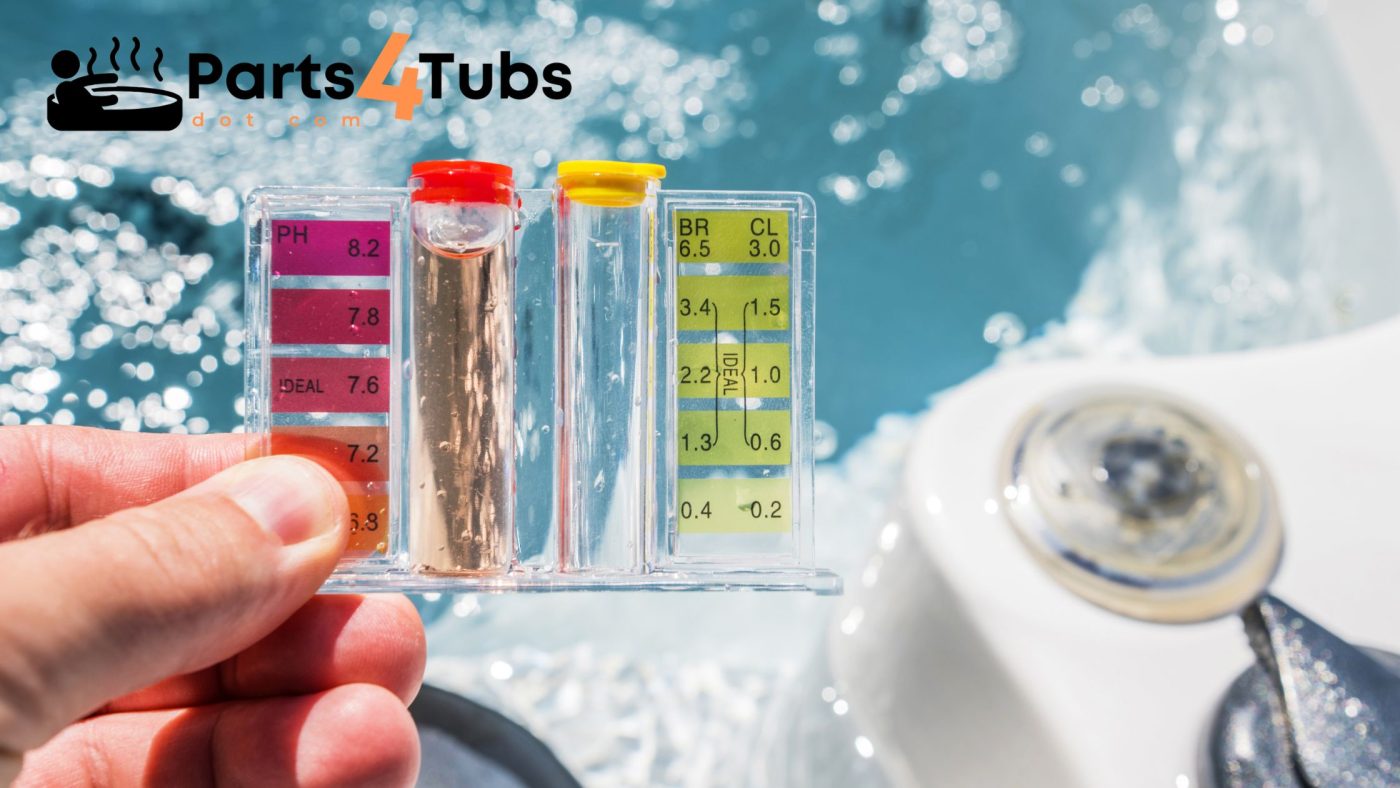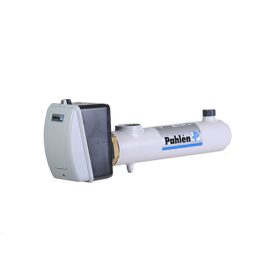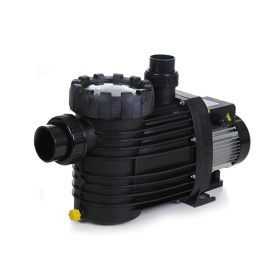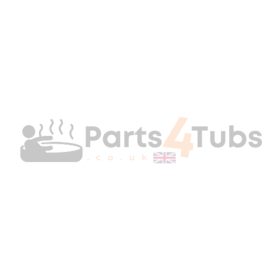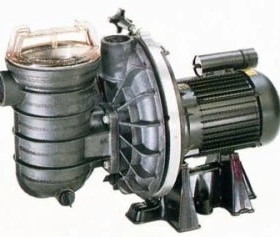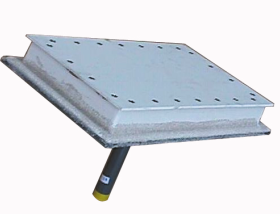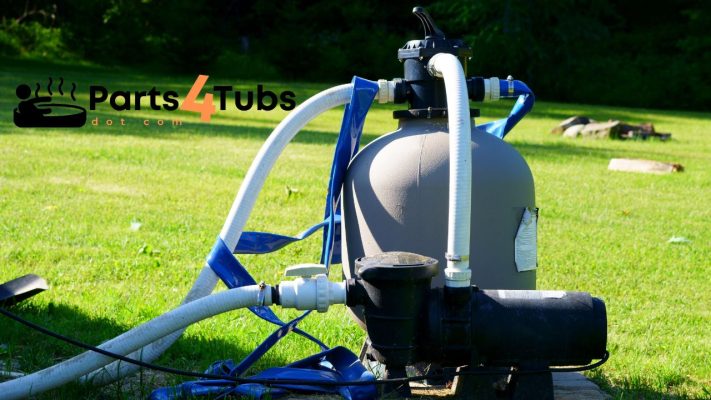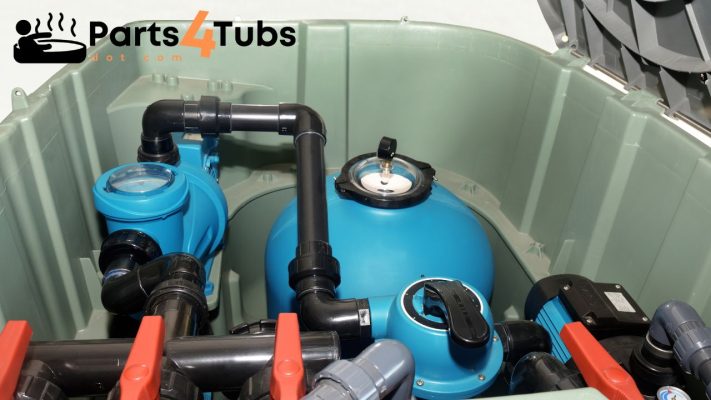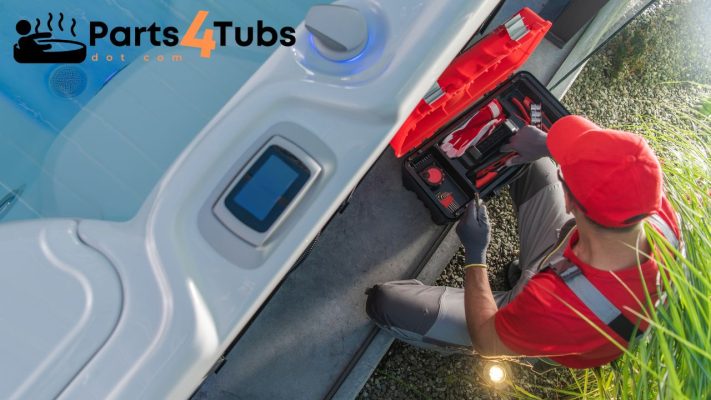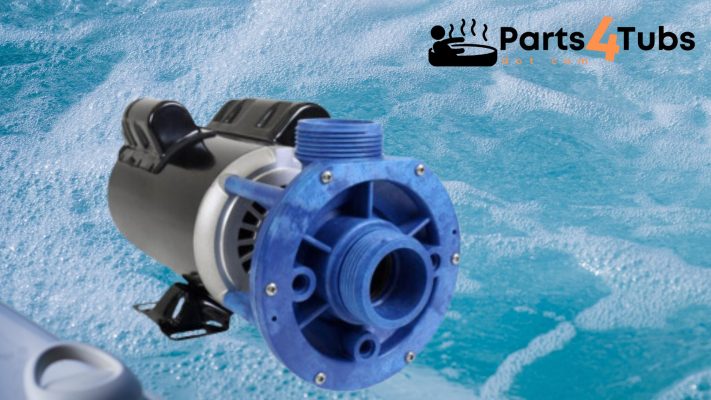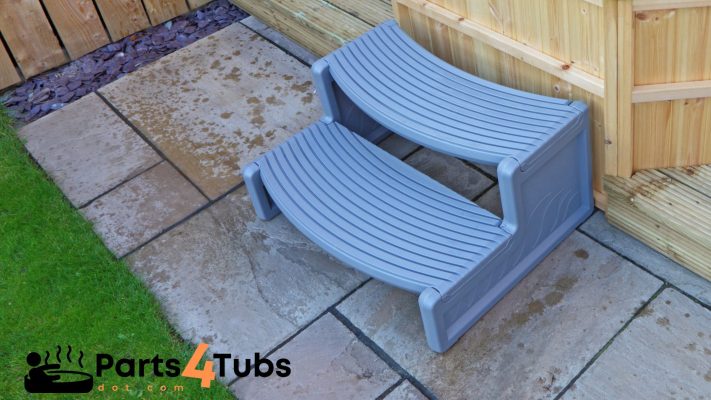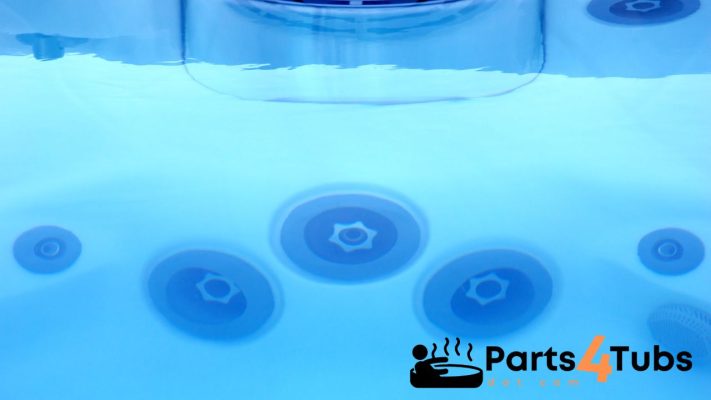Hot Tub Parts Related
Chlorine vs Bromine in a hot tub – which is best?
Chlorine vs Bromine in a hot tub – which is best? When it comes to maintaining a clean and safe hot tub environment, choosing the right sanitizer is crucial.
The two most common sanitizers used in hot tubs are chlorine and bromine. Both options effectively kill bacteria and other contaminants, ensuring the water remains safe and hygienic for bathers.
However, understanding the differences between chlorine and bromine is essential for making an informed decision that aligns with your preferences and needs. In this blog post, we will explore the characteristics, benefits, and considerations of chlorine and bromine as sanitizers for your hot tub.
Whether you are a new hot tub owner or looking to switch sanitizers, this guide will help you choose the best option for maintaining a clean and enjoyable hot tub experience.
Chlorine vs Bromine in a hot tub – what is Chlorine?
Chlorine is a widely used and effective sanitizer for hot tubs. It is a chemical compound that helps eliminate bacteria, viruses, algae, and other harmful contaminants present in the water.
Chlorine works by releasing free chlorine ions, which attack and destroy microorganisms, ensuring the water remains clean and safe for bathers. Here are some key points about chlorine as a sanitizer in a hot tub:
Sanitizing Power:
Chlorine is a powerful sanitizer that can effectively kill bacteria, viruses, and other pathogens in the hot tub water. It acts as a disinfectant, preventing the growth and spread of harmful microorganisms.
Availability and Affordability:
Chlorine is readily available and relatively affordable compared to other sanitizers. It is commonly found in various forms, including chlorine tablets, granules, or liquid, making it easily accessible for hot tub owners.
Oxidizing Properties:
Chlorine also acts as an oxidizer, breaking down organic matter, oils, and lotions that may accumulate in the water. This helps prevent the formation of unpleasant odors and waterline stains.
Versatility:
Chlorine is effective over a wide pH range, making it suitable for hot tubs with varying water chemistry. It can provide stable sanitation even in fluctuating pH levels.
Control and Maintenance:
Regular testing of chlorine levels is crucial to ensure proper sanitation. Maintaining the appropriate chlorine residual (usually between 1-3 ppm) is essential for keeping the water clean and safe. Adjusting the chlorine levels as needed and shock treating the hot tub periodically help maintain optimal water quality.
Potential Downsides:
Chlorine can have a distinctive odor and may cause skin or eye irritation if not properly balanced. However, proper water chemistry management and maintaining the recommended chlorine levels can minimize these effects.
Special Considerations:
Some hot tub owners may prefer chlorine-free options due to personal preferences or sensitivities. However, it is important to note that alternative sanitizers may require additional maintenance and may be less effective against certain types of contaminants.
Remember, it’s crucial to follow the manufacturer’s guidelines and recommendations for using chlorine as a sanitizer in your hot tub. Regular water testing, proper chlorine dosage, and maintaining balanced water chemistry will help ensure a clean and safe hot tub environment for your enjoyment.
Chlorine vs Bromine in a hot tub – what is Bromine?
Bromine is another popular sanitizer option for hot tubs. It is a chemical compound that effectively kills bacteria, viruses, and other contaminants in the water, ensuring a clean and safe hot tub environment. Here’s a closer look at bromine as a hot tub sanitizer:
Sanitizing Power:
Bromine is a highly effective sanitizer that provides reliable protection against bacteria, viruses, and other microorganisms commonly found in hot tub water. It works by releasing free bromine ions, which attack and destroy these harmful contaminants.
Enhanced Stability:
One of the key advantages of bromine is its enhanced stability in hot water compared to chlorine. Bromine remains active and effective at higher temperatures, making it an ideal choice for hot tubs where water temperatures are typically elevated.
Residual Protection:
Bromine has a residual effect, meaning it remains active in the water for a longer period compared to chlorine. This allows for continuous sanitization, even between hot tub uses, providing ongoing protection against microbial growth.
Reduced Odor:
Bromine is known for its lower odor compared to chlorine, making it an appealing choice for those sensitive to strong chemical smells. This can contribute to a more pleasant hot tub experience.
pH Tolerance:
Bromine is more tolerant of pH fluctuations compared to chlorine, making it easier to maintain proper water chemistry in a hot tub. It provides stable sanitization even in varying pH levels.
Enhanced Oxidizing Properties:
Bromine has superior oxidizing capabilities, helping break down and remove organic contaminants, oils, and lotions that can accumulate in the water. This helps prevent unpleasant odors and keeps the water clear.
Special Considerations:
It’s important to note that bromine requires the use of an activator or oxidizer, such as sodium bromide, to establish a bromide bank in the water. This initiates the bromine conversion process. Additionally, bromine levels should be regularly monitored and adjusted to maintain proper sanitization.
Skin and Eye Sensitivity:
Bromine is often preferred by individuals with sensitive skin or eyes, as it generally causes less irritation compared to chlorine. However, some individuals may still experience sensitivity, so proper water balance and maintenance are crucial.
As with any sanitizer, it’s important to follow manufacturer recommendations and maintain proper water chemistry when using bromine in your hot tub. Regular testing, maintaining appropriate bromine levels (typically between 3-5 ppm), and periodic shock treatments will help ensure a clean and safe hot tub experience.
Chlorine vs Bromine in a Hot Tub – Which is better?
The choice between chlorine and bromine as a sanitizer for your hot tub ultimately depends on your preferences, needs, and specific hot tub requirements. Both chlorine and bromine are effective sanitizers that can keep your hot tub water clean and safe. Here are some factors to consider when comparing chlorine and bromine:
Sanitizing Power:
Both chlorine and bromine are capable of effectively killing bacteria, viruses, and other contaminants in the water, providing sanitation and preventing the growth of harmful microorganisms.
Stability in Hot Water:
Bromine has an advantage in terms of stability at higher temperatures. It remains active and effective in hot water, making it a suitable choice for hot tubs where water temperatures are elevated.
Odor:
Chlorine has a distinct odor, which some people may find strong or unpleasant. On the other hand, bromine generally has a milder odor, making it more appealing to those sensitive to strong chemical smells.
pH Tolerance:
Bromine tends to be more tolerant of pH fluctuations compared to chlorine. It can provide stable sanitization even in varying pH levels, reducing the need for frequent pH adjustments.
Cost and Availability:
Chlorine is widely available and generally more affordable compared to bromine. Chlorine-based sanitizers come in various forms such as tablets, granules, or liquid, making them easily accessible for hot tub owners.
When deciding which sanitizer is better for your hot tub, consider factors such as water temperature, personal sensitivities, ease of use, and cost. Additionally, it’s important to follow manufacturer recommendations, regularly test water chemistry, and maintain appropriate sanitizer levels to ensure effective sanitization and a safe hot tub environment.
Ultimately, the choice between chlorine and bromine comes down to personal preference and finding the sanitizer that best suits your needs and provides the desired water quality and experience in your hot tub.
What are the alternatives to the Chlorine vs Bromine in a hot tub debate?
When considering alternatives to chlorine and bromine for hot tub sanitization, two commonly used options are ozone and UV-C (Ultraviolet-C) systems. Let’s take a closer look at these alternatives:
Ozone:
Ozone is a powerful oxidizing agent that effectively destroys bacteria, viruses, and other contaminants in the water. It is generated using an ozone generator or ozonator, which converts oxygen into ozone. Here are some key points about ozone as a hot tub sanitizer:
- Sanitizing Power: Ozone is highly effective in eliminating microorganisms and organic matter, providing efficient sanitization.
- Oxidation: Ozone acts as an oxidizer, breaking down oils, lotions, and other organic substances that can contribute to water cloudiness and odors.
- Additional Filtration: Ozone can enhance the performance of the hot tub’s filtration system, improving water clarity and reducing the load on other sanitizers.
- Limited Residual Effect: Unlike chlorine or bromine, ozone has a short half-life and dissipates quickly. It primarily works as an in-line sanitizer, providing immediate disinfection upon contact with contaminants.
UV-C (Ultraviolet-C) Systems:
UV-C technology utilizes ultraviolet light to kill bacteria, viruses, and other microorganisms in the water. Here’s what you need to know about UV-C systems:
- Sanitizing Power: UV-C systems provide effective disinfection, deactivating microorganisms by damaging their DNA or RNA.
- Additional Filtration: UV-C systems can complement the hot tub’s existing filtration system, helping to eliminate pathogens that may pass through the filter.
- Environmentally Friendly: UV-C systems don’t introduce additional chemicals into the water, making them an eco-friendly sanitization option.
- Limited Residual Effect: Similar to ozone, UV-C systems don’t provide a long-lasting residual effect. Continuous exposure to UV-C light is required to maintain sanitation.
It’s important to note that ozone and UV-C systems are often used as supplemental sanitizers rather than standalone options. They can enhance the effectiveness of chlorine or bromine, reducing the reliance on these chemicals while providing an additional layer of sanitization.
When considering alternatives to chlorine and bromine, it’s crucial to evaluate factors such as cost, maintenance requirements, and compatibility with your hot tub system. Additionally, be sure to follow manufacturer guidelines and local health regulations when using alternative sanitization methods.
Remember, regardless of the sanitizer option you choose, regular water testing, proper maintenance, and maintaining balanced water chemistry are essential for ensuring a clean and safe hot tub environment.
Happy Hot Tubbin’
Andi
Can I Help You?
If I can help you in any way I would love to hear from you. You can get in touch using the form below.
Thanks - Andi

